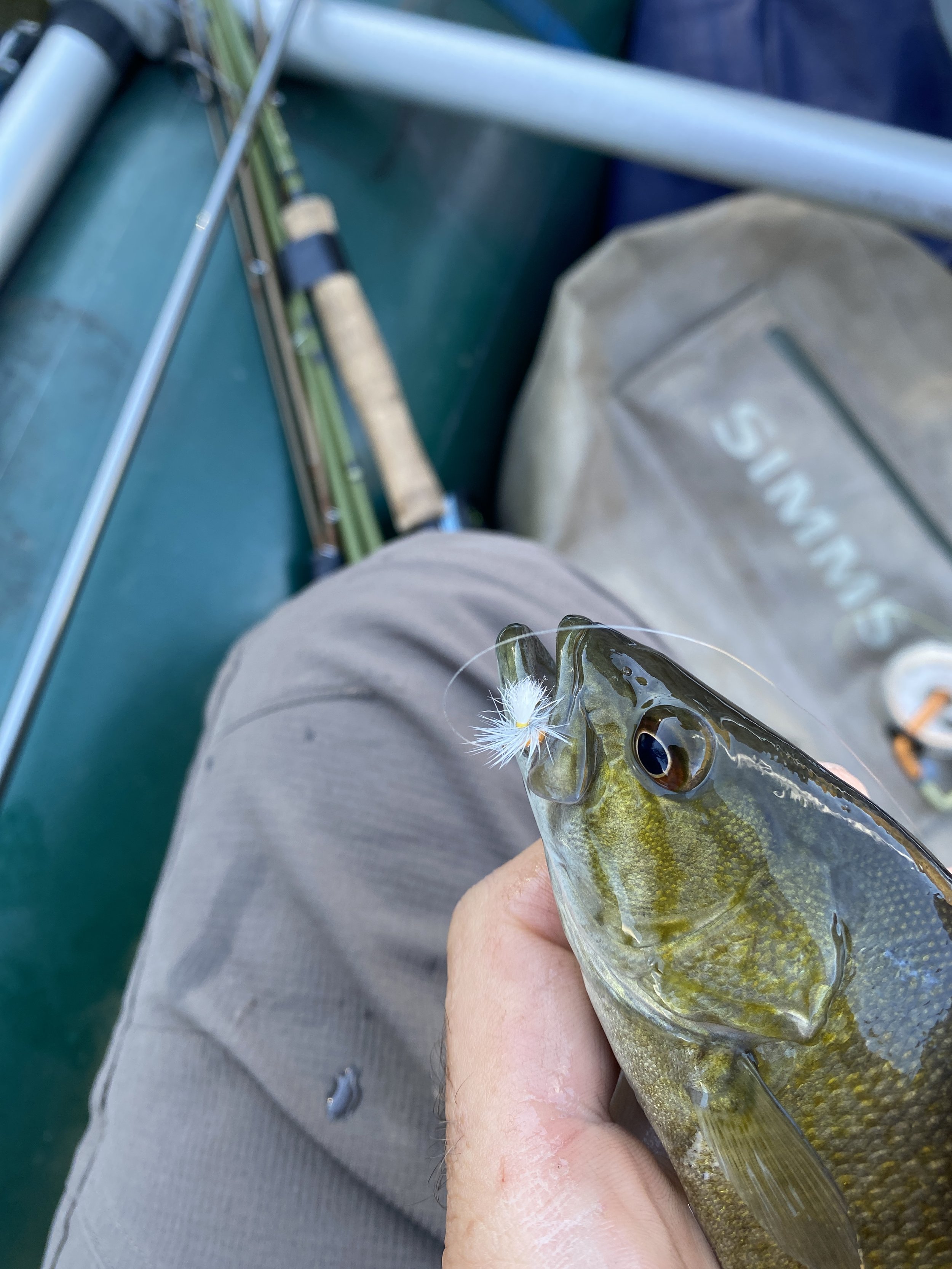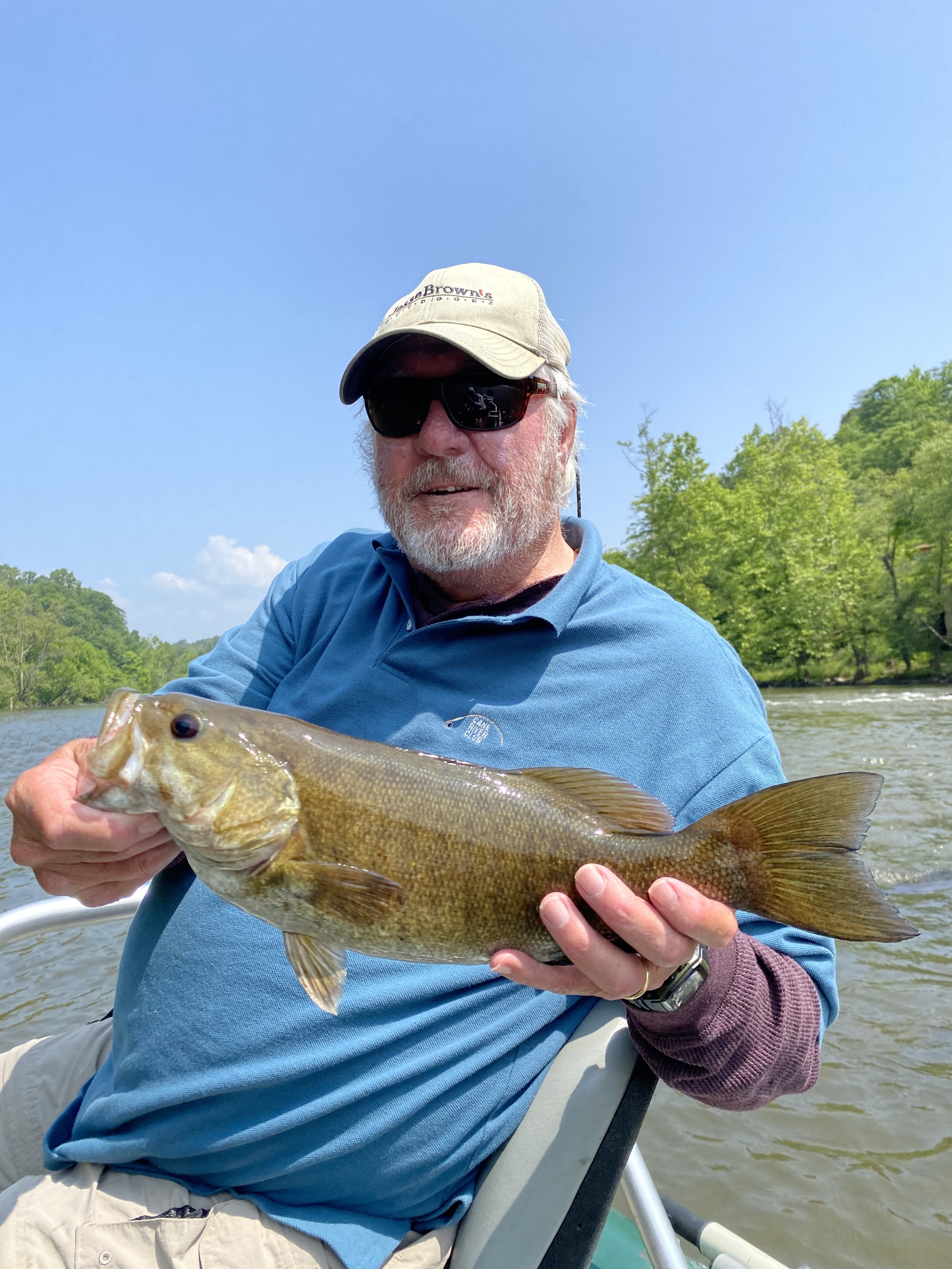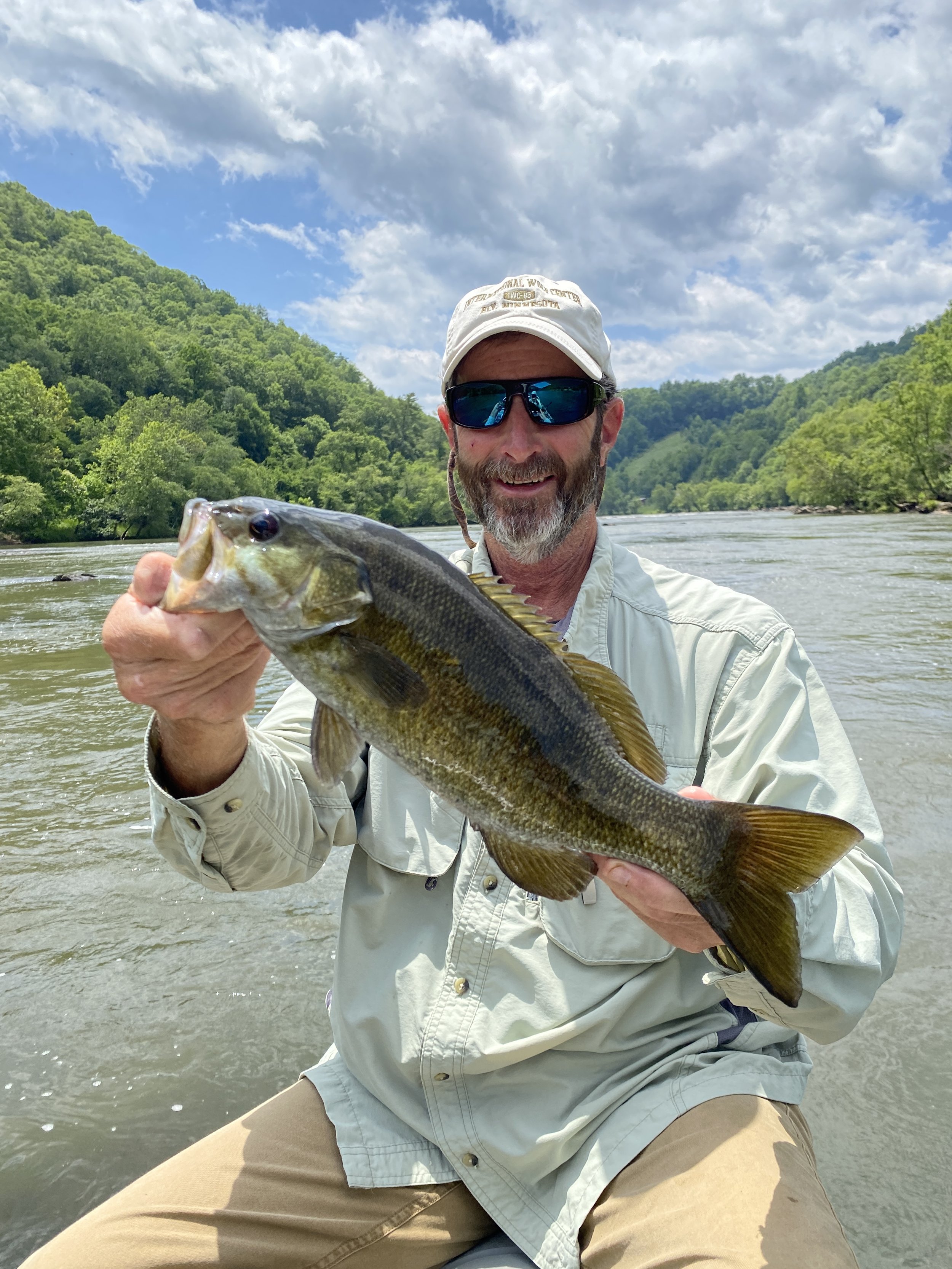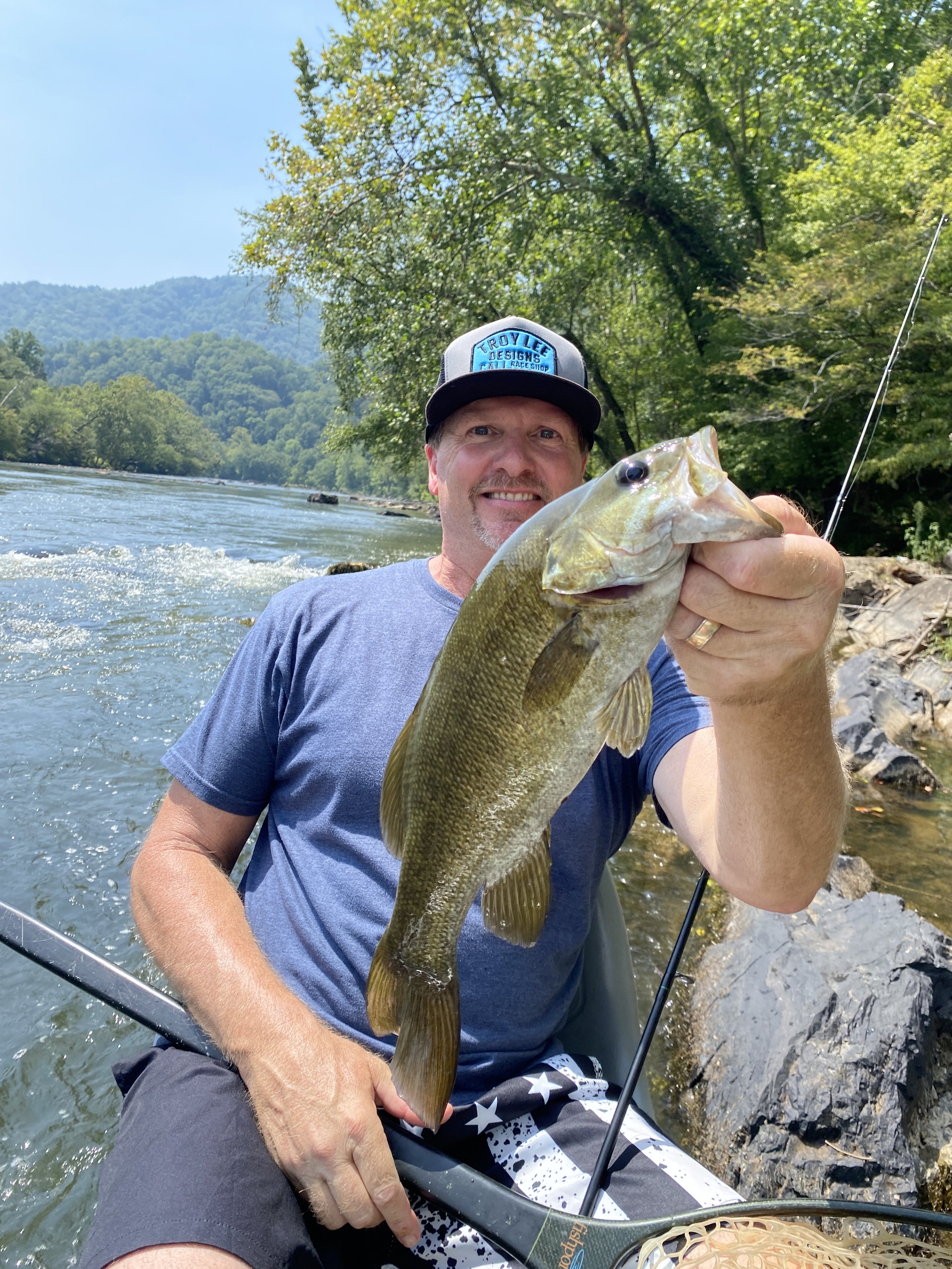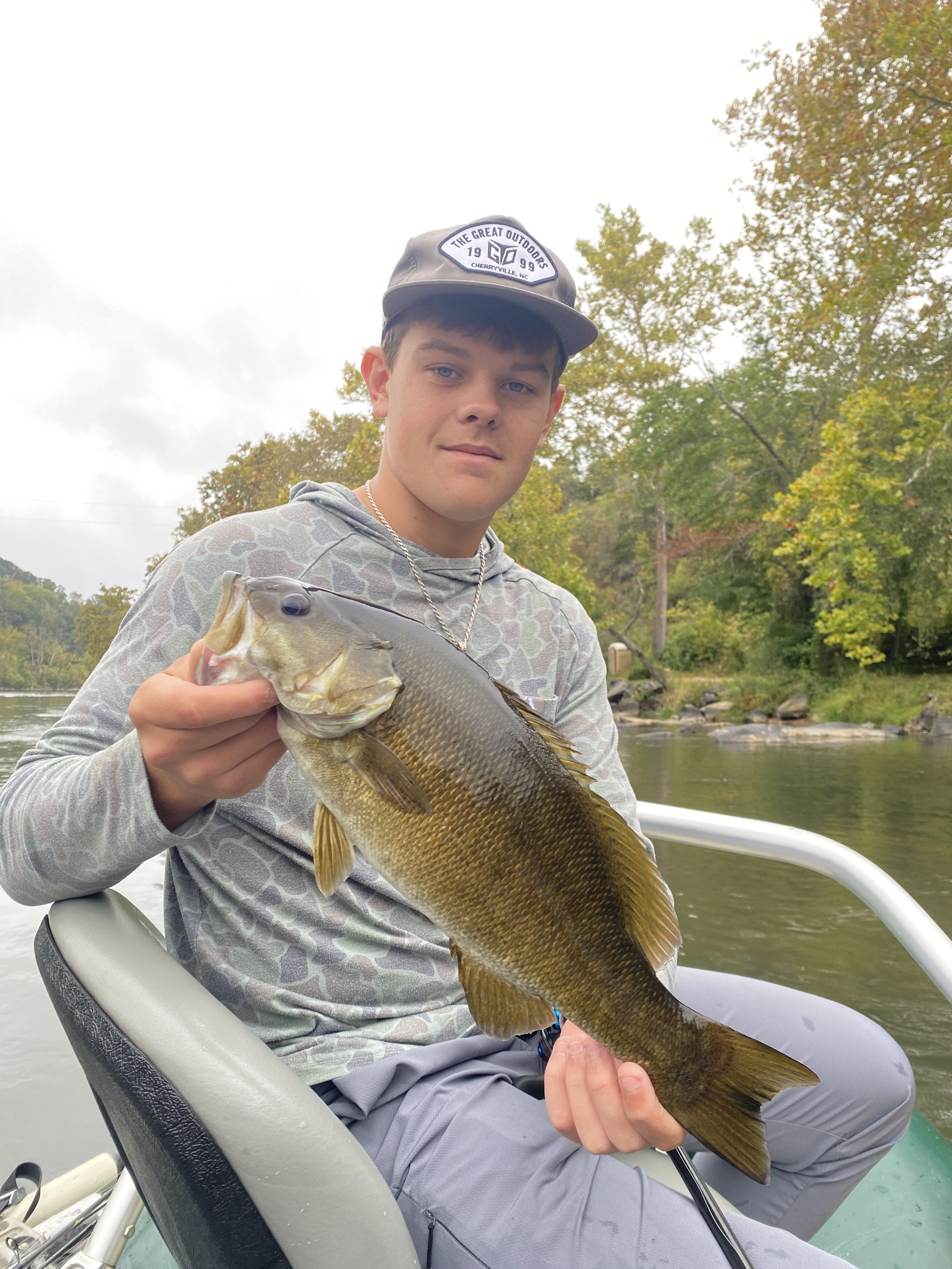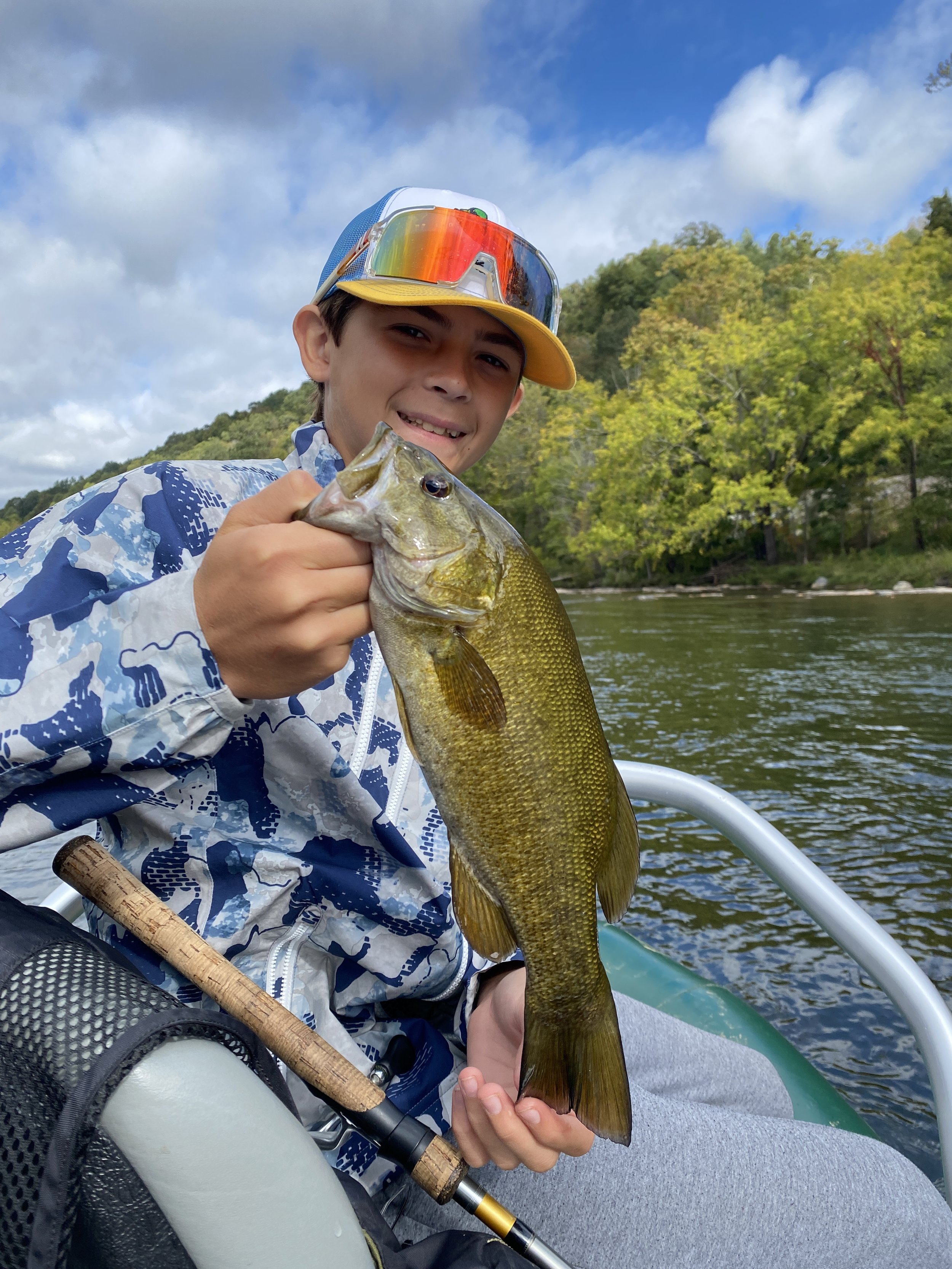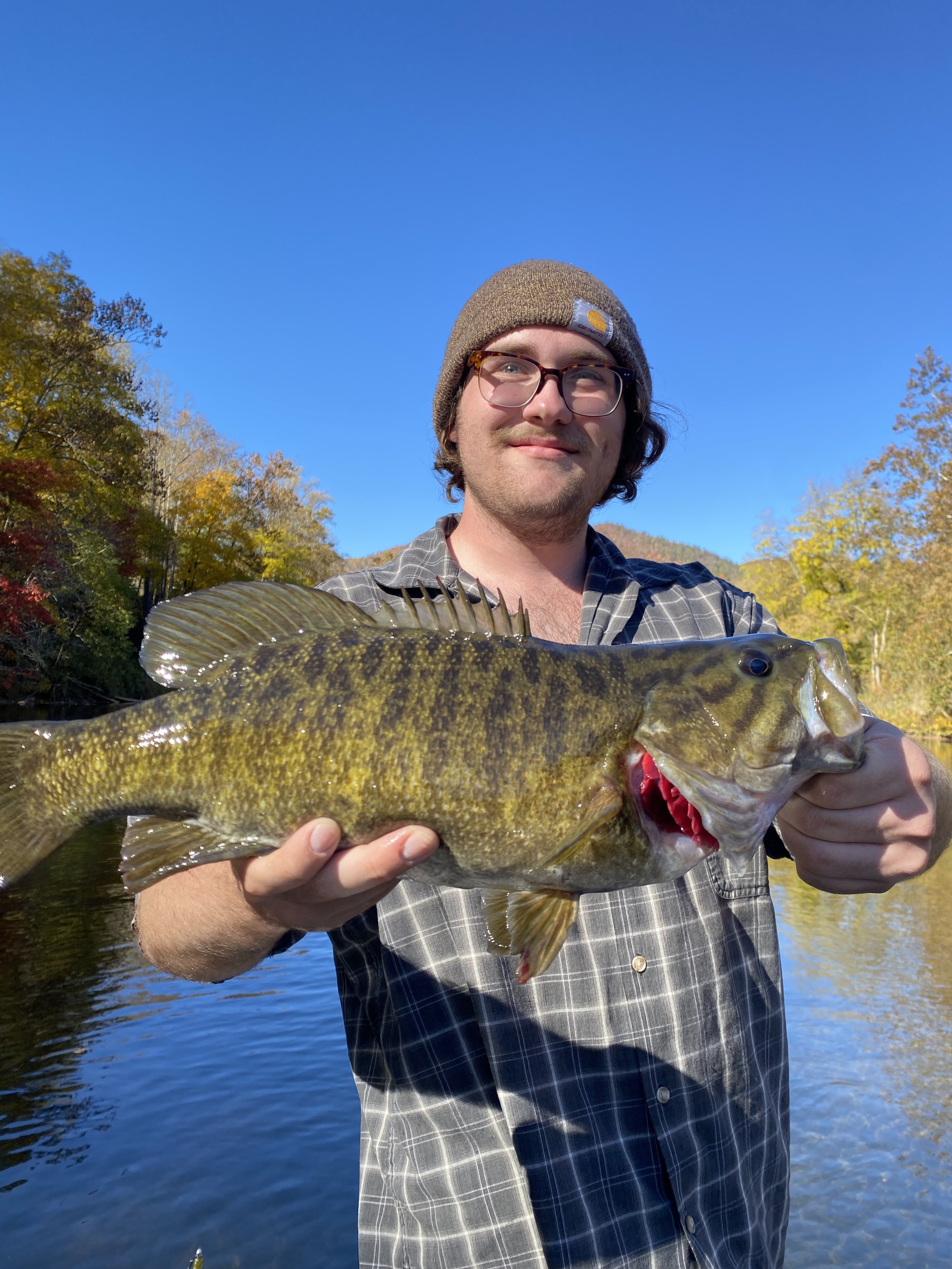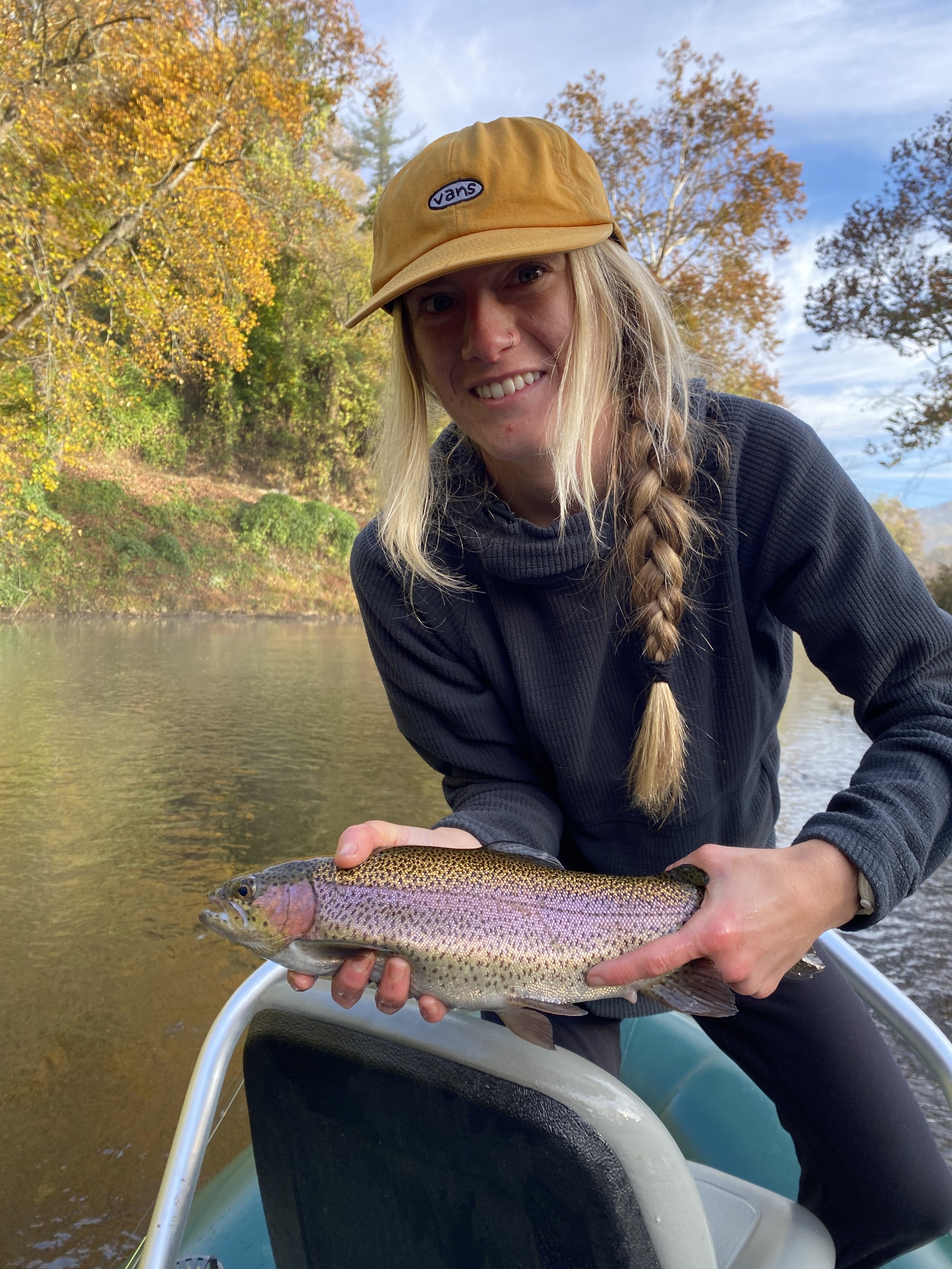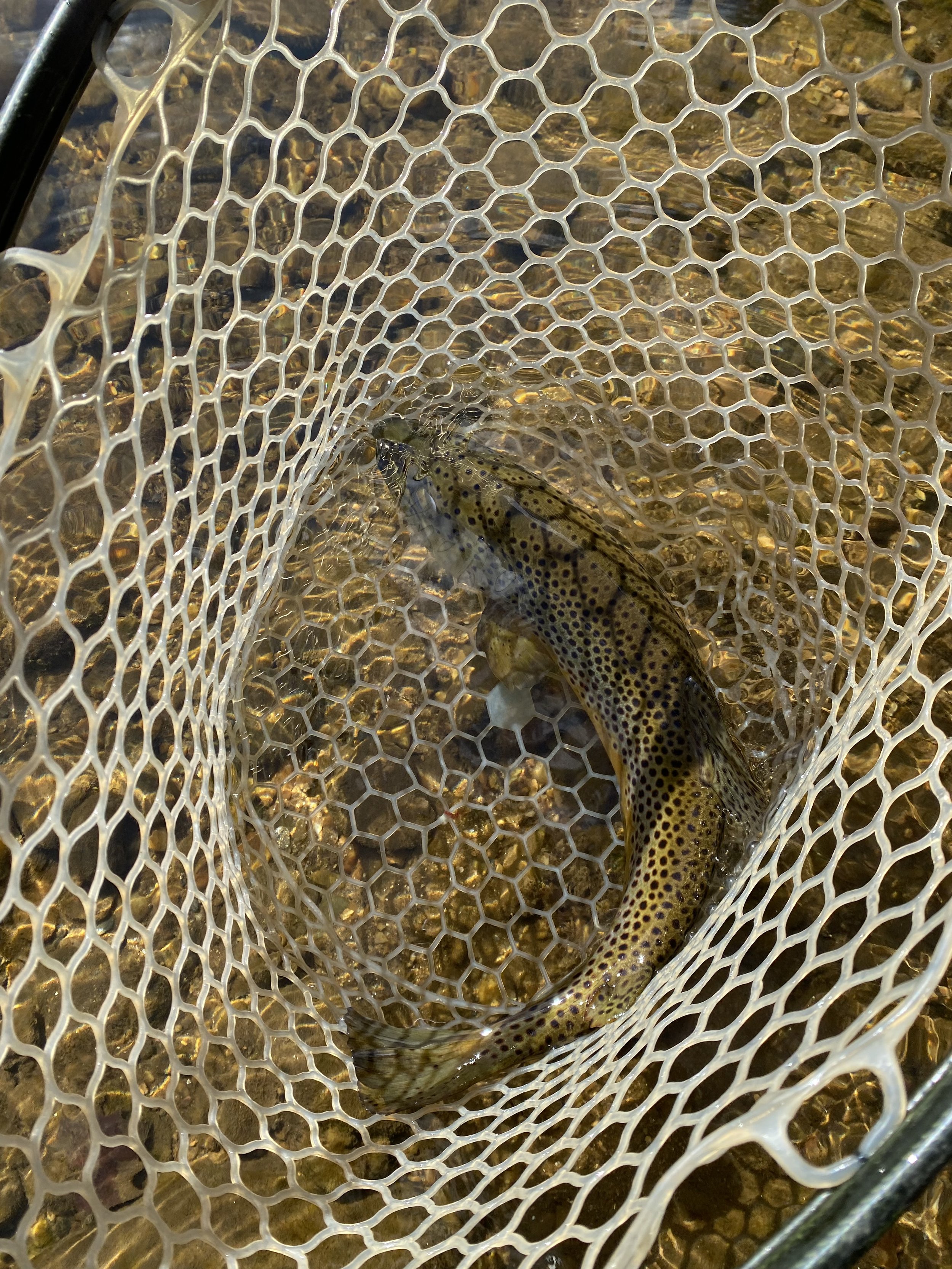Western North Carolina is in a moderate drought without any rainfall in the 10 day forecast. There are a lot of wild trout streams outside of Asheville that I never seen as low as they are right now. The low water has been challenging, but there some things you can do to give yourself the best chance at catching fish. The top things you can do that will help you catch fish in low water is to use longer leaders, downsize your tippet, and take off the heavy indicators.
I recently guided a client on a wild trout stream here in McDowell County and there is a long flat where some bigger wild rainbow trout post up. If you get up on the hole then those fish will immediately spook. This is typical of any wild trout but in low water conditions it is more heightened. I told the client I was going to lengthen the leader and they were shocked because we were already fishing a 12 foot long leader. I extended the leader to 16 feet and we threw a size 14 parachute caddis as the indicator and small midge as the dropper and hooked three trophy fish. The fishing was technical, but not impossible. We both walked away satisfied with the success of being able to trick those fish into eating our flies in tough conditions. The key to success was lengthening the leader. The longer the leader the better. Once you get familiar with fishing a longer leader you won’t ever go back to fishing the common 9 foot leaders. The advantage is getting your flies out in front of the fish without them seeing your fly line. When you are wade fishing, position yourself where you can cast in front of the fish without them seeing your fly line.
I’ve recently been using nothing but 6x tippet on all trips for my droppers. The 3 pound fluorocarbon is plenty strong enough to hold bigger fish. The key is to check your line after snags or a landed fish. Any fray in your tippet is a recipe for a missed fish.
Using smaller dry flies as indicators have been great because indicators make a huge splat on the water which spooks fish before you have even given yourself a chance at catching them. Some of my favorite indicator flies to drift nymphs under are parachute caddis, chubby chernobyls, and hoppers.
Doing these three things in low water conditions will up your chances at catching fish.
The best float fishing has been on the Tuckaseegee. We’ve been over there because the Catawba and the North Toe Rivers are just too low to successfully float fish right now. If you want to fish these rivers then it would be best to wait till we get some rainfall. The Tuckaseegee has been fishing well and we’ve seen some decent dry fly fishing in the afternoon. Stocked fish will eat dry flies! It’s cool teaching clients something other than nymphing on our trout floats. I’ll always have a dry fly rod and streamer rod in the boat because of all the different water types you encounter on floats. We were recently on the French Broad near Hot Springs and we got into some awesome dry fly fishing for smallmouth. We caught a pile of 6-8 inch smallmouth. The fish were feeding on blue wings nonstop one afternoon. After throwing crawfish patterns all day my clients were happy to see some topwater action. Below is one of the many we picked off top. I say all this to say always be ready to adjust based on what you’re seeing on the water. Paying attention to the small subtle clues that the fish and bugs give you go a long way.
The leaves are quickly falling and this can make fishing challenging as they float through our systems. This is a great time to fish heavier nymphs such as pats rubber legs or beadhead eggs that punch through the leaves better than your smaller nymphs. I also like to throw weighted buggers this time of year on the bigger rivers to get down into the slower moving water where there isn’t much leaves. Most of the leaves stay right below the surface since that’s where the fastest current is. If there are a lot of orange, red, and yellow leaves floating through then try fishing a white or black pattern that shows up better to the fish in the array of colors.
The smallmouth fishing was challenging this fall, but also really good. The challenge came from the grass that was present in the French Broad. Our normal hardbaits that we throw in the fall wasn’t possible because every cast they would grab big chunks of grass but we were able to trick some big fall smallmouth into eating some non traditional baits. We are wrapping up our smallmouth season since tomorrow we have a freeze warning here in Asheville. The lower water temperatures will slowly shut down the bite unless you want to fish a few hours in the afternoon which provides the warmest part of the day. The smallmouth fishing on the French Broad and Nolichucky Rivers was excellent this year. We learned a ton and caught some trophy smallmouth on both rivers. We look forward to seeing our clients again in March. Below are some of the best fish we caught this year.
The trout fishing is good currently, but we desperately need some rain. We plan on floating the Tuckaseegee River until we get get some rain that will bump up the flows on the Catawba and Toe Rivers. We are also looking forward to fishing the Catawba Tailrace this year. I’ll be updating everyone on how that fishery is doing towards the end of November. Fingers crossed we get a good stocking and they are able to spread the fish out. Below are some trout we’ve caught this early fall.

